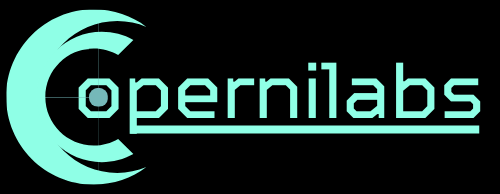Spatial data collection is rapidly evolving thanks to the integration of artificial intelligence (AI). This transformation, from simple raw acquisition to a targeted and efficient approach, is redefining the way companies approach their spatial data collection operations.

THE WINDFALL FOR NEW SPACE
Spatial data is crucial for a multitude of applications, from urban planning to environmental management. AI, by analyzing specific needs in real time, makes it possible to adjust collection
operations, thus ensuring optimized and relevant data acquisition.
the BENEFITS
Targeted data collection
AI offers the unique ability to precisely target the necessary data. This accuracy optimizes the
overall quality of the information collected by eliminating unnecessary data.
Operational Efficiency
By adjusting operations in real-time, AI improves the efficiency of data collection, reducing costs
and maximizing resource utilization.
THE IA WINDFALL SEEN BY COPERNILABS
At Copernilabs, we set ourselves apart by transforming spatial data collection into a smart and
targeted operation. Our AI solutions fine-tune and optimize collection operations, ensuring high-
quality data acquisition while saving valuable resources.
SIGN UP to access to copernilabs’ vision
Join us for a detailed journey into this revolutionary technology. Sign up now to unlock exclusive content that will take you into the heart of space innovation!
our perspective
Copernilabs optimizes data collection operations* by using AI to determine the best opportunities for observation. For companies operating in this sector, our approach offers several advantages

Intelligent Fusion of Heterogeneous Data
Data: By integrating data from different sensors such as radar, RF, camera, radiating cable and lidar, we provide a complete and detailed view of the environment, improving the relevance of the information collected.

Key Technologies
The use of machine learning (ML) and computer vision is a key differentiator. ML enables continuous process adaptation, ensuring constant improvement in data accuracy. Computer vision provides in-depth analysis of images and videos, enhancing data quality.
How Copernilabs is changing the game in this sector?
Our approach goes beyond simple data collection. By identifying the best observation opportunities, we enable companies to maximize the value of their collection operations. In addition, by merging heterogeneous data, we provide a more comprehensive perspective, allowing for deeper analysis and more informed decisions.
Copernilabs holistic approach, combined with our expertise in the fusion of heterogeneous data and the use of cutting-edge technologies, is fundamentally changing the game in the spatial data collection industry. We facilitate the emergence of a new era where companies can make more informed decisions based on accurate and relevant data.
Relevant Usefulness of Some Key Technologies
Machine Learning (ML):
Our advanced use of ML allows our AI systems to continuously learn and adjust their processes based on new data. This ensures that the accuracy and relevance of the information collected is constantly improved.
Computer Vision
Computer vision is an essential part of our approach, allowing for in-depth analysis of the images and videos collected. This technology provides contextual and detailed understanding, improving the quality of the data collected.
Scientific Expert Opinion
The integration of these technologies is crucial to remain competitive in the space data collection industry. ML and computer vision make it possible to exploit the full potential of the various sensors, offering more accurate and relevant information for informed decisions.
READY TO to optimize your data collection operations ?
Get in touch with us at Copernilabs. Learn how our AI solutions, powered by intelligent fusion of heterogeneous data and cutting-edge technologies, can revolutionize your data acquisition. Together, let’s embrace the future of spatial data collection.
